Building Your Own Leadership Brand
March 2025 by Sharon Dillard
 As leaders or up-and-coming leaders in our companies, communities and families, we know that surrounding ourselves with smart, confident people is the key to creating effective teams. Setting high standards for ourselves and others, and always looking for ways to improve ourselves, is key as well. How we build our own leadership brand is vital, and the reason that people see us as leaders in the first place. And why they look to us for advice, mentorship and direction. Here are some tips I’ve learned along the way to build a successful leadership brand.
As leaders or up-and-coming leaders in our companies, communities and families, we know that surrounding ourselves with smart, confident people is the key to creating effective teams. Setting high standards for ourselves and others, and always looking for ways to improve ourselves, is key as well. How we build our own leadership brand is vital, and the reason that people see us as leaders in the first place. And why they look to us for advice, mentorship and direction. Here are some tips I’ve learned along the way to build a successful leadership brand.
Recognize who you are. First, ask yourself who you are. Are you a take no prisoners and shoot from the hip leader, or one who gathers information and deliberates before taking action? Do you draw on your own experience and instincts when facing an issue, or seek collaboration? Somewhere in between? When you understand and own your own style, you’re better able to evaluate how well it works with your people. Adaptability to people and circumstances is a hallmark of a good leader. In fact, being flexible and open to meeting people where they are is your number one job as the person in charge.
Take a leadership inventory. If you’re uncertain about, have never considered or need a refresher on your own leadership style, take a leadership inventory to understand your strengths, weaknesses and how they impact your role. There are online leadership style assessments you can take for free, but think about sitting with a professional organizational development person, your HR department or a business coach who can run you through a comprehensive assessment of your skills and preferred ways of being in the world. These professionals can help you interpret the results and how you can implement them to improve your skills.
Get real. Leaders must possess strong self-awareness. That is, they must understand their own core expertise, experience and credibility, and where they fall short or need improvement. Where are you ahead of the competition in your industry or organization? Where do you fall behind and could use some study or course corrections? You don’t have to be all things to all people, but you should recognize where you shine and where you need polish.
Find a mentor. Every successful leader has had someone or someones in their corner who can help them understand their blind spots and where opportunities and challenges lie. Finding a mentor usually isn’t difficult either. Look at the larger business world for role models, mentors and coaches. Consider joining a peer group network to gain a larger perspective on what makes a leader successful in different organizations. Then use what you’ve learned to improve your own leadership abilities within your own company.
Create your narrative: What’s your unique story as a leader? Steve Jobs positioned himself as an innovator in technology. Warren Buffet relies on his image as a down-to-earth, tell-it-like-it-is person to run one of the most successful companies in the world. People listened and still listen to them and their stories. Once you’ve found your unique narrative, keep it simple and share your point of view and insights from that position.
Now tell it: Start telling your story to your employees and customers – the thing that makes you unique as a leader. Use social media, newsletters, blogging and letters to the editor to explore ways of getting the word out. Find hot button issues and share your perspective, always staying consistent with your unique message. People follow leaders because they want to be inspired and motivated. Inspire and motivate them with your story.
Give back: Part of being a leader is acting like one. That means mentoring or assisting people in your organization, and contributing to the success of your industry and community. Serve on committees and boards. Sponsor business and non-profit group activities. Spend time nurturing the next generation of leaders, wherever you find them.
Leaders come in all shapes, styles, and forms. When you stop to think about some of the leaders that have inspired you, or even some that have made you mad, you’ll be able to identify the qualities of good leadership. And those that you find ineffective and don’t want to model. When you use these tips to build your own leadership brand, and you’ll be successful in demonstrating to others that you’re a leader worth following. Just sayin’.
Sharon Dillard is the award-winning CEO of Get A Grip Inc., a national franchise kitchen and bathroom resurfacing company based in Albuquerque, New Mexico.

Checking In On Your Goals
September 2024 by Sharon Dillard
 The chill of fall is in the air. Why not use this change of season as an opportunity to not only set new goals for the months to come but to remember those resolutions you made at the start of the year. Revisiting the hectic spring and summer months could reaffirm those months’ old goals or help you refocus on newer priorities and build momentum for the New Year.
The chill of fall is in the air. Why not use this change of season as an opportunity to not only set new goals for the months to come but to remember those resolutions you made at the start of the year. Revisiting the hectic spring and summer months could reaffirm those months’ old goals or help you refocus on newer priorities and build momentum for the New Year.
The fall also tends to be a little calmer than when things start to go crazy for the holidays. Here are some ideas for taking stock of the past months and adjusting or resetting your goals for the future:
Review. Looking at where you’ve been tells you where you want to go. Think back on the year so far and the goals you set back in January. Any big victories? Roadblocks? Lessons learned so you can adjust in the future? Taking the time to review these simple questions can make a huge difference in setting the tone for the rest of your year.
Plan.
Start Small. A fresh start resets old thinking and behaviors and gives you a chance to change. Setting goals that are too ambitious can overwhelm you, though, which ultimately leads to disappointment. So instead of planning the entire year like you would in January, think about some short-term goals you could accomplish by December 31.
Think Motivation. The right motivation makes a world of difference. Do you need external validation but you’re not getting it? Is money what drives you? Are you a people person but stuck in a job that requires lots of alone time? Figuring out what drives you means knowing what really matters to you. Remember to set goals that allow you to use this internal motivation. You’ll be amazed at how much you can get done.
Uncover Your Strengths. If your goals aren’t aligned with your strengths and skills, think about slowly shifting them towards what you really thrive at. This will make them much easier to achieve them. Your strengths are your talents, skills, and abilities—the things that people praise and seek your guidance for. Knowing what you’re best at allows you to take advantage of opportunities; most of the time these strengths and skills are the things we love to do or what we’re naturally good at.
Define Your Beliefs. Your strengths address “what?” Your values and principles answer “how?” These underlying beliefs steer everything you do and help define who you are or want to be. If you don’t value money, then reaching a sales goal won’t matter. But if helping people is an underlying belief, then a goal of having 100% customer satisfaction could really get you moving.
Set 3 Work-Related Goals. What are your top three work-related goals for the remainder of the year? Why are those goals important to you? What habits and processes do you need to adopt to support those goals? Being happy with your work life can lead to happiness outside it, too.
Set 3 Personal Goals. What are three personal goals for the remainder of the year? Why are those goals important? Who can you share those goals with to help hold you accountable? No matter how great your work life is, you can never be truly happy if you’re not satisfied with your personal life. Make sure that the goals in both of these parts of your life complement one another; conflicting goals often lead to little or no progress at all.
The fall is a great time for reflection. As the leaves are falling, try turning over a new one yourself, using these ideas to help you get a firm grasp on those last few goals of yours. There are probably still items you want to achieve this year. Put them on the top of your To-Do list. Getting things in order for the rest of the year will help you feel less overwhelmed when the craziness of the holidays hit. Stop making excuses and accomplish them! Just sayin’.
Sharon Dillard is the award-winning CEO of Get A Grip Inc., a national franchise kitchen and bathroom resurfacing company based in Albuquerque, New Mexico.

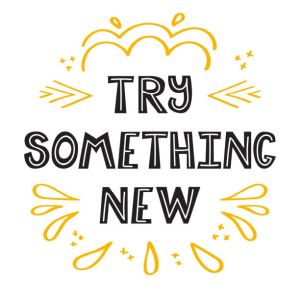 We all know how easy it is to get into a routine. They’re good because they keep us on schedule, keep us moving forward, and help to create a stable daily life. But they can also turn into ruts and leave us unmotivated to grow.
We all know how easy it is to get into a routine. They’re good because they keep us on schedule, keep us moving forward, and help to create a stable daily life. But they can also turn into ruts and leave us unmotivated to grow.
Some of you have heard my story – in my mid-forties, I changed careers to start a business in a garage. In a different state. Who does that? But sometimes shaking up our regular routines is the best way to grow.
Was I scared? You betcha! But by welcoming the unfamiliar, I achieved incredible benefits for myself – emotionally, physically, creatively, and more.
Is a leap into the unknown for you? The benefits of trying new things can be incredible. Believe me, it’s never too late to venture out of your comfortable routine. Here are some of the gains you can achieve by trying new things, whatever they may be.
You’ll get to know yourself better. You may find that salsa dancing, making bread from scratch, learning to fly a plane are all things you really enjoy. Or that you don’t. Really, how do you know if you like or dislike a new food, activity or adventure before you try? The more new things you try, the more you figure out what you really like and dislike – because these preferences are unique to you!
Fear takes a backseat. As you practice new adventures, fear transforms from a crippling factor to a minor bump in the road. You’ve created a new routine after all! One of the best and most exciting benefits of trying something new is that you overcome fear – fear of the unknown, fear of the imaginary consequences and fear of failure.
Your sense of adventure grows. Your adventurous self is set free when you try new things. These new things can be as simple as a food you’ve never tasted or a recipe that’s not in your usual rotation. Or they can be as complicated as learning a new language or planning a vacation to an exotic, faraway land. Approaching these new opportunities with the spirit of adventure sets us up for success and helps us approach the next challenge with even more confidence.
You listen to your gut. Don’t make an immediate snap judgement, remember that being uncomfortable is part of the process of trying something new. But if after taking those piano lessons for a few weeks, maybe you’re not enjoying them because they feel too much like homework. Then stop. Listen to your gut when it talks to you. If a new venture isn’t exciting or fun anymore, take the experience and move on to the next one.
New experiences stimulate creativity. That creativity naturally transfers to other areas of your life. You begin to think about everything differently. That’s amazing! When you try new things, you challenge your brain to think and adapt. This stimulates creativity.
You learn empathy. Trying something new teaches you about other people’s experiences and the struggles they went through to achieve their goals. Trust me, you aren’t the first person to take up a paintbrush, mount a saddle for horseback riding or attempt to learn French. Empathy and insight into another person’s life are perhaps the most valuable lessons you can ever learn.
Your emotional health improves. Being emotionally centered is good for you, and those around you. Studies show that people who engage in a variety of experiences are more likely to retain positive emotions and minimize negative ones than people who have fewer experiences.
Your physical health will benefit. There are health benefits that come from constantly developing and living one’s life to the fullest. Ancient Greek philosopher Aristotle called it eudaimonia, or the condition of human flourishing or of living well. Today, research posits that the greater sense of purpose and personal growth associated with eudaimonia correlates with lower cortisol levels, better immune function, and more efficient sleep. Health bonus unlocked!
Time becomes more memorable. By trying new things, you benefit from new and special memories that will last a lifetime. Trying something new gives you a fresh perspective. And gets you excited with the anticipation of what might happen!
Here’s your challenge: do something that you’ve been interested in for a while. Is it designing a new garden or painting your kitchen? Is it joining a writer’s group to hone your story telling skills? Is it volunteering with homeless pets? Whatever the new thing is you’ve wanted to try – go for it! You’ve got nothing to lose but your fear. And so very much to gain. Just sayin’.
Sharon Dillard is the award-winning CEO of Get A Grip Inc., a national franchise kitchen and bathroom resurfacing company based in Albuquerque, New Mexico.

No “I” in Team
May 2024 by Sharon Dillard
 We’ve all heard the saying, “There’s no ‘I’ in team.” What that means is that teamwork isn’t about a single person, it’s about working together to achieve a common goal. When you’ve got a great team behind you, you don’t worry about your business if you’re sick, on vacation or dealing with important family matters. I certainly don’t because I have great confidence in my team. They know what to do, even when I’m not there.
We’ve all heard the saying, “There’s no ‘I’ in team.” What that means is that teamwork isn’t about a single person, it’s about working together to achieve a common goal. When you’ve got a great team behind you, you don’t worry about your business if you’re sick, on vacation or dealing with important family matters. I certainly don’t because I have great confidence in my team. They know what to do, even when I’m not there.
We’ve put systems and procedures in place to ensure that (almost) whatever the situation, the people in the office and the field know who is in charge of what, who knows the answers to certain tricky questions, and where to look for information. Here are some tips to ensure that your team can carry on without you, when necessary.
Defined Roles & Responsibilities: Everyone on the team should understand their individual roles and responsibilities and how they fit into the larger picture. A maverick salesperson may work best on his or her own with little supervision, while others thrive in a group environment where feedback comes regularly from the group. What’s important is that everyone knows what is expected of them and where they fit in the puzzle. When all the pieces fit, each individual’s unique strengths unite to make the team a powerhouse.
Team Purpose: Constant feedback keeps any team on track. The act of reminding the team of how and what they can be doing better, and receiving feedback from them as to how they could improve the process is important. Don’t wait until a problem occurs to make a course correction. Your team should meet regularly (whatever regularly means to your team) to discuss progress toward its goals. Every team is different, so reminding the team of their purpose and receiving updates from them doesn’t need to be formal or overly structured. A quick check in each day and a team meeting once a week is often just right for some teams. Other teams may need less frequent check-ins. The leader’s job is to keep them on track.
Know Their Needs and Motivations: Your team is a puzzle full of pieces. There are lots of ways to put them together. Each way yields a result, and some ways give better results. When you get to know your team, you get to understand their needs. Knowing your team means investing the time to understand what motivates them, how they think and how to get the best from them. By embracing the different personalities, you get the best from them.
Reward the Team: Acknowledgement and reward honors the work of the team. People love recognition, so take time to give your team rewards they deserve. Don’t take performance for granted, even if you believe the team is just doing their job. They could be doing the job anywhere, and remain loyal to leaders and companies they feel respect their skills and effort. Buying lunch on a busy or stressful point in a project, or arranging a team outing builds camaraderie.
Celebrate: Celebration at the end of a project or reaching a goal is different from a reward. Celebrations reflect on the process and what your team has done well, as well as what it could improve. Remember what allowed you to reach your goal as part of the celebration of success – the often-tremendous effort of the team – not you as the leader.
Be a Great Leader: Great leadership builds great teams – leaders make decisions (often difficult ones), set high standards and look for ways to improve. Leaders are only as successful as their teams and the great ones know that with the right team dynamics, decisions and diverse personalities, everyone wins in the end. Building great teams is a balancing act between finding the right people, giving them enough direction and freedom to experiment, fail and (hopefully) succeed.
Successful teams require attention. When your team members feel like they are part of something larger than themselves, their collective energy brings extraordinary results. If your team isn’t delivering, ask yourself why. Are you, as the leader, too much or not enough involved? Could you be gone for a week or two weeks without the team falling apart or losing focus? Just sayin’.
Sharon Dillard is the award-winning CEO of Get A Grip Inc., a national franchise kitchen and bathroom resurfacing company based in Albuquerque, New Mexico.

Elevate Your Workplace
March 2024 by Sharon Dillard
 In a job market flooded with Help Wanted signs, employers face the tough challenge of securing and retaining top talent amidst the aftermath of our economy’s two-year rebound and significant employment shifts. With more options available, workers are rethinking what they value in a job, from where they work to what they’re paid. It’s crucial for employers to step up and highlight not only the job roles and work environment but also the strengths of the company to attract today’s job seekers. So, how can you make your workplace a magnet for talent? Here are some practical tips to guide you.
In a job market flooded with Help Wanted signs, employers face the tough challenge of securing and retaining top talent amidst the aftermath of our economy’s two-year rebound and significant employment shifts. With more options available, workers are rethinking what they value in a job, from where they work to what they’re paid. It’s crucial for employers to step up and highlight not only the job roles and work environment but also the strengths of the company to attract today’s job seekers. So, how can you make your workplace a magnet for talent? Here are some practical tips to guide you.
Create the culture. CEOs are now talking more about equity, inclusion, and fairness, according to the Harvard Business Review. Employees want to be part of a company that prioritizes these values, too. Creating an environment where everyone feels welcome, regardless of skin color, gender, or sexual orientation, is essential.
Fuel your workplace with positivity. Are your employees truly engaged? Do you fully embrace remote, flexible, or hybrid working environments? Are your employees happy working for you? Consider ways to show your appreciation for them, such as catered lunches or after-hours events (dinners, ballgames, movie nights). And if you’re unsure how to achieve this, ask your current staff — they’ll have plenty of ideas.
Focus on skills, not just experience. Hiring someone who can quickly adapt and excel means focusing more on skills and less on the resume. Today’s perfect candidates might not have the “perfect” resume. Look beyond employment gaps, education, and years of experience – seek individuals who are eager to learn, adapt, and positively influence the workplace while having the necessary skills to excel in the role.
Revamp your compensation strategy. Looking to stand out in attracting and keeping employees? Think beyond traditional compensation. While some may prioritize a higher salary or hiring bonus, others value generous time off, health insurance, or retirement packages. Offering any or all of these perks can make your company more appealing.
Prioritize employee wellbeing. With a renewed focus post-pandemic, many companies have introduced or expanded benefits and perks aimed at supporting both physical and mental health. From gym memberships and mental health days to programs promoting work/life balance and parental leave, these efforts highlight a commitment to employee wellbeing and reducing burnout and stress.
Upgrade your tech. There’s no excuse for outdated technology, particularly with tools that encourage collaboration and remote work (i.e., Microsoft Teams, Google Workspace, Microsoft 365, Zoom, Dropbox). Over 85% of job seekers consider technology when evaluating a potential job. Stay current and provide training on the latest tools and systems.
Reward your flock, watch them soar. As the saying goes, “birds of a feather flock together” — happy employees attract more like-minded individuals, after all. Your current staff can be your company’s best advertisement. If they’re incentivized to refer others like themselves, it can make all the difference. Consider offering a referral bonus or other signs of appreciation when a current employee refers a new hire. It’s a simple way to encourage your team and strengthen your workforce.
As employers, let’s refine our approach to hiring and keeping talent, discovering effective ways to elevate our workplaces, enrich the employee experience, and become highly desirable companies to work for. It’s time to make our mark. Just sayin’.
Sharon Dillard is the award-winning CEO of Get A Grip Inc., a national franchise kitchen and bathroom resurfacing company based in Albuquerque, New Mexico.

Holiday Recovery Made Simple
January 2024 by Sharon Dillard
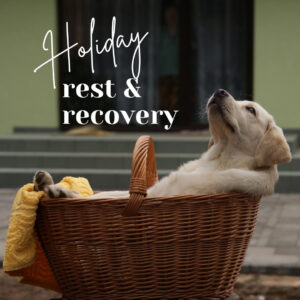 The holidays stress some of us out, but for me, it’s the post-holiday weeks that really get to me. The festive buzz is over, and it’s back to tackling projects we postponed. When anxiety about the future or past troubles me, I recall advice from a wise horse trainer: Breathe. Stay in the moment—right here, right now.
The holidays stress some of us out, but for me, it’s the post-holiday weeks that really get to me. The festive buzz is over, and it’s back to tackling projects we postponed. When anxiety about the future or past troubles me, I recall advice from a wise horse trainer: Breathe. Stay in the moment—right here, right now.
Living in an age of distractions, constant technology disrupts our focus on the future. At work, I daydream about vacation, yet on vacation, I fret about the mounting workload back at my desk. Appreciating the present is a challenge; our minds, like monkeys, swing from thought to thought. Phones and devices only add to the chaos.
Here are a few post-holiday tips that help me stay present:
Recharge: Sick of feeling exhausted? Our bodies need energy to face challenges, and stress saps it away. A gym membership could help, but I often end up yawning on the machines. My solution? Spin class! With a set time and supportive companions, it’s the perfect boost. If group classes aren’t your style and you’re in a chilly locale like me (thanks, Albuquerque), try walking on an indoor track. Local high schools or community centers might even offer it for free – check out your options!
Renew: So, let’s talk about sleep—it’s kind of like the VIP pass to recovering, right? I’ve found that getting into a cozy routine of hitting the hay and waking up around the same time, even on lazy weekends, has been my secret weapon for renewing that energy. It’s like a subtle yet powerful reboot for the day.
Breathe: Ever notice how we can totally forget to do something as basic as, well, breathing? It’s kind of funny, but seriously, it works wonders! Take a sec—right now if you want—and take a slow inhale. Then let it out. These deep breaths help you stay focused and centered. Throw in some deep breaths during your commute, whether you’re cruising to work or running errands. And hey, don’t forget to pull out this trick when you find yourself in some wild or unfamiliar situation—it helps release the fear that comes along with it.
Unplug: Once a week, I make it a mission to ditch the screens and immerse myself in a good book instead of binge-watching TV. Picture this: my favorite classical music playing softly in the background, creating the perfect soundtrack to my tech-free day. Welcome to my “Sanity Sundays.” It’s like a mental reset button, helping me refocus and gather my thoughts for the week ahead.
Trade-Off: Now, here’s my game plan for tackling the office chaos. Channeling the vibe of “Sanity Sundays,” I make my Fridays escape. I take off on Friday, then I swing back into the office on Sundays, tripling my productivity. It’s a savvy trade-off, keeping me sane and setting the stage for a week of peak performance.
Multi-tasking: Ever catch onto the irony that the person claiming to juggle twenty things is usually not in the best mood? Trust me, been there. Trying to do ten things at once turns into an internal battle for me. I’d rather tackle one thing at a time, fully present and, of course, happy, than juggle ten things and risk forgetting I’m doing any of them—or worse, doing them all poorly.
Flow: Acceptance is key—we can’t control every detail. It can be tough to ride the waves of uncertainty, but when it happens, I take a breath and remind myself that others need the freedom and trust to handle their roles. If the end result is solid, it’s time to ditch the micromanaging and let the flow take its course.
Embrace the moment: According to General Electric CEO Jeff Immelt, “Do every job like you’re going to have it forever. People start to get derailed when they say [about a task], ‘This one is beneath me.’ Being the best at whatever you’re doing, in the moment, is very, very rewarding.” So, dive in, give your all, and savor the satisfaction of being fully present in each task.
So, when the post-holiday buzz sets in and I find myself stressing about all the things I need to tackle—returning calls & emails and getting those projects back on track—I keep these tips in mind to help me stay right here, right now. Just sayin’!
Sharon Dillard is the award-winning CEO of Get A Grip Inc., a national franchise kitchen and bathroom resurfacing company based in Albuquerque, New Mexico.

Keeping Fit This Holiday Season
November 2023 by Sharon Dillard
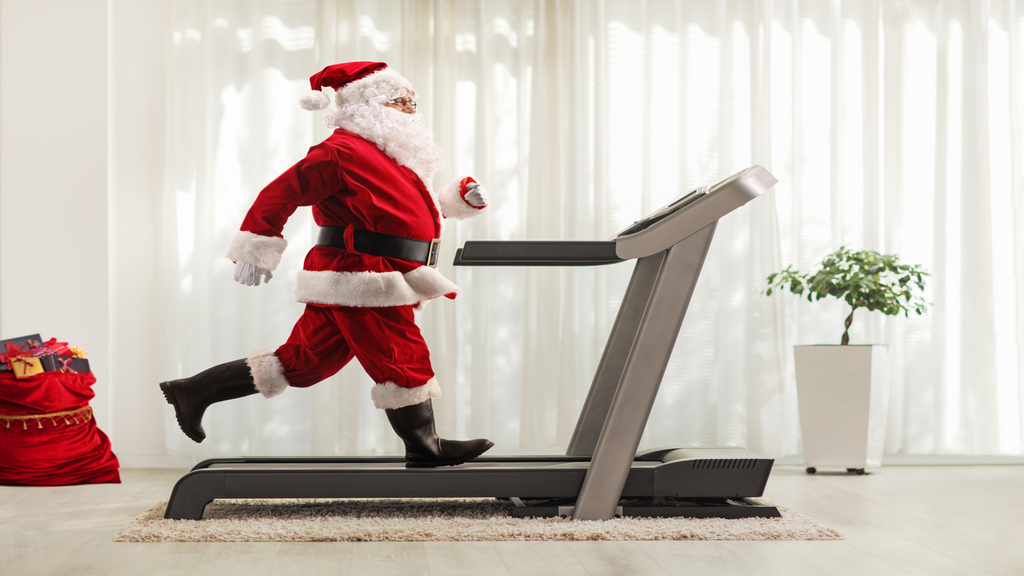
The holidays are coming, and while I’m looking forward to friends, family and those special, holiday-only dishes, I’m not looking forward to the more around the middle that’s sure to follow. So I’m starting now to think about how to keep fit this holiday season. My first idea? Get moving!
You only need a little time and you’ll discover that being physically active is the best way to live a longer, healthier, and happier life. And it can help you achieve and maintain a healthy weight while lowering the risk for certain diseases. Here are some of the ways to add a few more steps to your Fitbit – all low or no cost.
Prescription Trails. Healthcare professionals assess their patients’ fitness at the beginning, then write a tailored walking prescription based on the current physical condition. Walking programs can contribute to the treatment and prevention of a number of chronic conditions such as diabetes, depression and high blood pressure. For more information on local walking trails and parks go to: www.prescriptiontrailsnm.org.
Walk the dog. You and your best friend will benefit from even a quick stroll around the block. Our dogs love to get out, but when it’s cold and getting dark at the end of a long day, it sure is hard to go for the leash and head outside. That’s when I look at my furry kids and remember that their health is just as important as mine.
Buddy up! Exercising with a friend is one of the best ways to get and stay motivated. You make a commitment to each other – and no one wants to disappoint their friend. Plus, you wind up pushing each other to do more, faster and longer than if you go it alone.
10,000 steps. Conventional wisdom says that 10,000 steps a day is the minimum we need to move. In the normal course of events — just living and working — the average person takes anywhere from 900 to 3000 steps in a day and not much more. Walking 10,000 steps is the approximate equivalent of walking 5 miles. You can totally do that.
Pedometer or mobile app: Unless you are really good at counting, you will probably want to pick up a quality pedometer to measure your steps. Some pedometers also monitor distances, and even heart rate, calories burned, etc. or find a mobile app that you can add to your phone.
Truck it. You’ve heard this one over and over again. Park as far away from entrances when you shop. I started this years ago when I got my first new car, and didn’t want any door dings. Then I realized, it takes just a few seconds longer but worth it to burn that few extra calories. It all adds up.
Hit the mall. Did you know that most malls open an hour or so early for walkers? Cold weather is here, so move your walk time indoors. And even if the stores are open, you can leave your cash and credit cards at home and simply stroll around the mall in a temperature-controlled, relatively safe environment. As long as you plan your route away from the food court, you’ll be fine.
Published: New Mexico Apartment News Magazine – November/December 2023
Sharon Dillard is the award-winning CEO of Get A Grip Inc., a national franchise kitchen and bathroom resurfacing company based in Albuquerque, New Mexico.

Be A Great Remote Employee
September 2023 by Sharon Dillard
 There has been lots in the news lately about businesses requiring their employees to return to the office full time, mostly because there’s an awful lot of empty office space around these days. There’s also been a lot about employees pushing back – they want to continue to work from home with all the benefits that come with it. But if you’re an employee working from home it’s easier to fall into the too much work trap. Or just the opposite – home demands may be interfering with your ability to get work done.
There has been lots in the news lately about businesses requiring their employees to return to the office full time, mostly because there’s an awful lot of empty office space around these days. There’s also been a lot about employees pushing back – they want to continue to work from home with all the benefits that come with it. But if you’re an employee working from home it’s easier to fall into the too much work trap. Or just the opposite – home demands may be interfering with your ability to get work done.
The popularity of working at home has helped employees avoid the stress of going to work, rushing home to cook, clean, and help the kids with homework that had many of us feeling drained. Many of us have been able to find balance between family demands and the boss’s. Here are a few ideas to help show your employer that you are a productive employee, and that working from home is to everyone’s benefit.
Leave work at work. With the technology to connect to anyone at any time virtually anywhere, there’s no real boundary between work and home – unless you create it. Make a conscious decision to separate work time from personal time. When you’re with your family, turn off your cell phone. When it’s time to take a vacation, take that time off. You need that time to recharge for when you’re back to work.
Leave home at the door. Assuming you’ve got someplace other than the kitchen table to work! If you do, close the door to your workspace and hang a sign that says “Unless the house or you are on fire, do not disturb.” And then concentrate on work while you’re there. Remember those boundaries and let your boss know that you’ve got them in place to avoid interruptions.
Start strong (and early). The small things we do on a daily basis add up. A few more added minutes to your morning can help with tasks around the house – defrosting something for dinner or starting the dishwasher. Try waking up several hours before starting work. By waking up a little earlier you eliminate frantically preparing yourself and/or your kids, not eating breakfast or forgetting tasks that can accumulate by the end of the day and week.
Routine. You’ve heard it before. Repetition strengthens and confirms. Develop routines in your life so that on the days you don’t have the mojo, you can put yourself on autopilot. Knowing you can fall back on built-in routines will get you through the day.
Food to go. Keep healthy snacks handy. This helps when you’ve got to get the kids or yourself to a soccer game or doctor’s appointment and your schedule doesn’t allow time to fix lunch or dinner. I do this and it’s been a real lifesaver!
You’re worthy of balance. Eat healthy foods and include physical activity as a part of your life. Better yet, discover activities you can do with a partner or friend – such as hiking, yoga or taking cooking classes (my favorite). Schedule these things regularly – even during your “work” day. Taking a 15-minute break to walk around your neighborhood can actually make you more productive.
Go-to place. Near the door, find an area for items that you need on a daily basis: keys, purse, school backpacks or letters to be mailed. Also, keep a petty cash jar handy for all household members to use for parking, lunches or that all important tip for the delivery person.
Go-to person. Find a trusted friend that you can vent your frustrations to. And equally important, allow them to vent to you. Share your feelings to ease your pain. Put a time limit on the pity party, though, then do something fun together.
Say no. Quit doing things out of guilt or a false sense of obligation – both in your personal and professional life. You will make more room for the activities that are meaningful to you and bring you joy.
Laugh. Look on the bright side and have a sense of humor. Remember that great viral video of the two kids interrupting the man’s work meeting and he just kept talking? Stuff happens, so laughing can help ease difficult situations.
So if you’re someone continuing to work from home, try these strategies to show your employer that you’re serious about work, even if they don’t see you in the office every day. Just sayin’.
Published: New Mexico Apartment News Magazine – September/October 2023
Sharon Dillard is the award-winning CEO of Get A Grip Inc., a national franchise kitchen and bathroom resurfacing company based in Albuquerque, New Mexico.

Effective Communication
July 2023 by Sharon Dillard
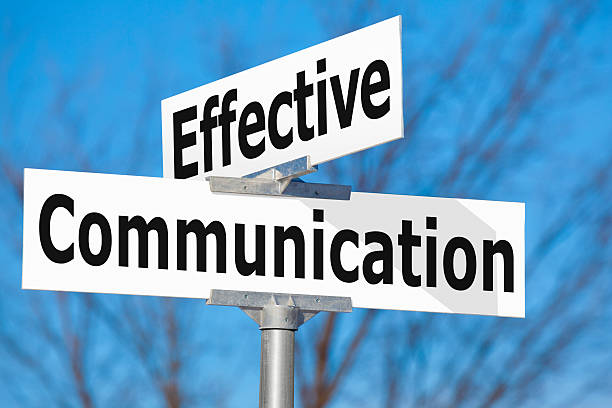 A generational communication shift in combination with coming out of quarantine and only seeing people on screens have left many of us perplexed on how to interact with others, especially when we know people want to do business with those who show likability, respect, and accountability. This builds trust, which in turn helps your business. It takes a little effort to build these communication skills, but it pays off.
A generational communication shift in combination with coming out of quarantine and only seeing people on screens have left many of us perplexed on how to interact with others, especially when we know people want to do business with those who show likability, respect, and accountability. This builds trust, which in turn helps your business. It takes a little effort to build these communication skills, but it pays off.
Here are a few tips I’ve relied on over the years to improve my communication skills. They may help you, too.
Smile. Smiling shows enthusiasm and energy. It’s an easy way to convey warmth and likeability. Smiling is also contagious. People will walk away thinking you’re a friendly, relatable person, which is exactly what you want to build trust.
Make eye contact. Focusing on the person speaking lets them know you’re listening to them, and that you aren’t worrying about what to make for dinner or about your next call. Keep your phone hidden; resist the urge to check your email or texts. Even if the conversation isn’t comfortable, make eye contact and hold it.
Give a firm handshake. Not too hard, not too soft – think about Goldilocks and the Three Bears. Research shows that people decide whether or not they like you within seconds of meeting you. A firm handshake contributes enormously to a positive first impression.
Call people by their names. I know this is hard for those of us who forget someone’s name the minute we hear it, but practicing using someone’s name in conversation helps us cement it in our minds. It signals that you’re interested in making a connection with the other person. People appreciate it when you remember their names. Practice different strategies to remember names if you have trouble.
Listen more than you speak. The old saw “you have two ears and only one mouth, and you should use them in that proportion” is still as true as when your grandmother admonished you with it. Try not just responding to what someone is saying but recapping what you’ve heard to ensure understanding. Say, “If I’m understanding you correctly, you said….” Try it, it works!
Say you’re sorry. Trust me; this works even when you’re not to blame! It’s an effective way to show that you’re putting yourself in their shoes and are trying to relate. Taking accountability for your/your company’s mistakes is the first step in banishing ill feelings. Expressing that you understand someone’s experience increases trust.
Keep your word. Another way to build trust is by keeping your word, whether that’s meeting a deadline or delivering the quality service you said you would. In the rare event plans do change, let them know before the deadline. Offer an apology and give the customer an update. Remember: no one likes to be kept in the dark, especially paying customers.
Stand and sit up straight. Bad posture sends a message that you’re bored, don’t care, or grumpy. If you convey negative body language, no one will want to get to know you. In fact, according to psychologists, standing or sitting in an expansive way (legs apart, arms spread wide, leaning forward) conveys confidence. Everyone likes a confident person.
Positivity is key. While it’s easy to complain and gossip, no one wants to be around a whiner. These energy vampires suck all the life out of the room. Talk about an instant turnoff! When surrounded by these negative Nellies, change your situation. And don’t be one, either!
Don’t judge a book by its cover. It’s a cliché, sure, but first impressions can be powerful. And as much as we don’t like to admit it, a less-than-stellar first impression can cause us to close people out. The more effort we make to reach out to people to get to know them, the more likable we become in their eyes.
Many of these tips come down to simply showing respect. When we show respect, most of the time we get respect and trust in return. Now, try these easy communication skills out today. We guarantee you’ll see results. Just sayin’.
Published: New Mexico Apartment News Magazine – July/August 2023
Sharon Dillard is the award-winning CEO of Get A Grip Inc., a national franchise kitchen and bathroom resurfacing company based in Albuquerque, New Mexico.

Our Changed Workplace
March 2023 by Sharon Dillard
 There’s been a lot of talk here lately about remote work. What’s the value? It is important to keep doing our jobs remotely when almost every business, office and government institution is “back to normal?” For many, doing our jobs remotely has shown that we’re more productive than if we went to the office. And that’s good, because productivity is a key measure of business success.
There’s been a lot of talk here lately about remote work. What’s the value? It is important to keep doing our jobs remotely when almost every business, office and government institution is “back to normal?” For many, doing our jobs remotely has shown that we’re more productive than if we went to the office. And that’s good, because productivity is a key measure of business success.
Other positive aspects of working remotely include decreased commute times and automobile wear and tear, savings on work clothes and cleaning bills, no need to buy lunches, and the ability to directly care for children or elders. If you’re still working remotely, here are some tips to stay productive, whether you’re the one working from home, you supervise those who do, or both!
Reliable Tech is Vital. A stable, consistent internet connection is vital for anyone working remotely, and anyone wanting to supervise remotely. In addition, the ability to take video calls requires a camera, good speakers, a big screen (or two) and a microphone. If working from home means being around kids or pets, noise canceling headphones can be a lifesaver. As an employer, providing up to date computers/laptops is also a must, loaded with the programs and features employees need to do their job successfully.
Dedicated Workspace: A dedicated workspace is the first step to success. How big or small that space is depends on your work style and duties. Do you normally need lots of space to work on projects? Consider a garage, spare room or your kitchen table. But remember, video calls show your background, so think about that – or use a filter that blurs or substitutes a background for you.
Make it Comfortable: Good lighting (natural or otherwise), an ergonomic office chair, photos and a plant or two will make any workspace comfortable. Another perk of working remotely is that you can choose your background music without disturbing others, or work in silence if that suits you better. Everyone is more productive and engaged when they’re at ease!
Set Boundaries: It’s easy to work all the time when work and home are in the same place, but one great part of working remotely is the flexibility to work whenever you are most productive. Be careful about letting clients and coworkers know they can reach you any time of day or night, though. Let your family know when you need to be left alone by closing the door or putting up a sign that says come back later. And do the same with your coworkers and boss. Shared online calendars and auto replies are great ways to let people know when you’re occupied and won’t be available.
Keep a Routine: Every boss appreciates and values reliable staff. But just because work and home are now the same doesn’t mean you should let them blur together. Get to your remote workstation at a regular, consistent time, take breaks and lunch on a schedule and develop the habit of officially “logging off” at the end of the day. Then turn off email and text notifications when the day is done. You won’t be tempted to check in. Unless it’s an emergency, keep regular office hours, and stay away from your workspace, just like you would if you were in your place of business. Keeping them separate will help you keep your sanity.
Embrace the Perks! The blurring of work and home means you’ve got to give yourself permission to enjoy being at home. If your job allows, working in leisure clothing means less wear and tear on your “fancy” clothes. Keeping a fitness routine, taking periodic stretches and coffee or tea breaks, is easier, too. Working remotely means you could be free to schedule appointments during the work day, or work from a location other than your home or city, as well. Because as long as you hit your goals, does it matter where you physically are? Just make sure to travel safely and don’t shirk your work obligations.
Communication is Key: The key to success in any role is keeping the communication flowing. Just because you’re no longer sitting at the next desk over is no reason to stop talking with your coworkers, your boss, or those you supervise. Make sure to schedule phone or video check-ins on a regular basis to better connect on your business goals, any upcoming projects and daily tasks to make sure you stay on top of things Slack, MS Teams, and Google Meet are great tools you can utilize to help.
Now that so many of us are regularly working remotely, life looks different – and maybe better. Maybe you or your employees are more productive without workplace distractions, or maybe it allows you to spend more time with your family. It’s important to remember we’re all in this together. Just sayin’.
Published: New Mexico Apartment News Magazine – Mar/Apr 2023
Sharon Dillard is the award-winning CEO of Get A Grip Inc., a national franchise kitchen and bathroom resurfacing company based in Albuquerque, New Mexico.











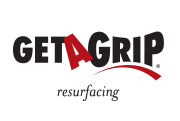

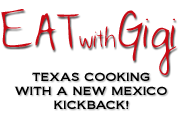
Recent Comments